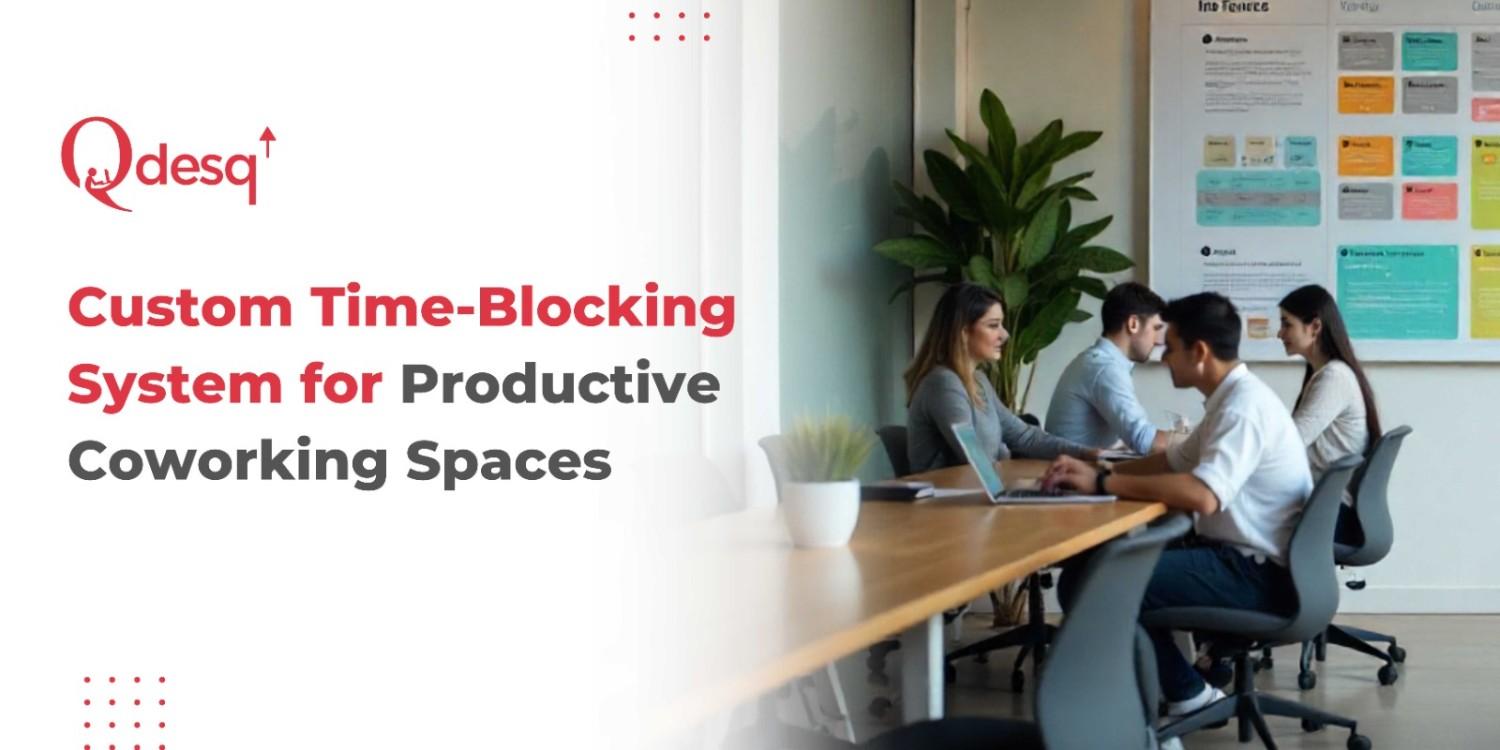In modern, fast-paced coworking spaces, managing time effectively can determine whether tasks are completed successfully or time is spent unproductively. Implementing a personalised time-blocking approach provides a clear and organised method to plan daily activities, reduce interruptions, and enhance overall efficiency.
This blog explains how to build a personalised time-blocking routine perfectly suited for coworking spaces, addressing common challenges and questions professionals face every day.
What is Time Blocking and Why It’s Essential in Coworking Spaces
Time blocking is a straightforward yet effective method for improving productivity, in which your daily work schedule is organised into distinct time intervals, with each interval focused on a particular task or activity. Rather than juggling tasks or responding reactively to interruptions, you dedicate focused time slots for deep work, meetings, administrative duties, and breaks.
For professionals working in coworking spaces or shared offices in India, often characterised by vibrant activity and communal energy. Time blocking helps create clear boundaries, leading to better concentration and efficient use of the shared environment.
Recognise Your Productivity Patterns and Prioritise Tasks
The first step to designing a functional time-blocking system is understanding your natural work rhythms. Identify when you feel most energised—morning, afternoon, or evening—and schedule your most demanding tasks during these periods. Next, categorise your work into high-energy activities like deep focus projects, medium-energy tasks like collaboration or meetings, and low-energy duties such as answering emails.
Prioritising your tasks dynamically helps in allocating realistic and productive time blocks without overload.
Craft Flexible Time Blocks that Match Your Workflow in Your Workspace
Flexibility in your schedule accommodates the unpredictable nature of coworking spaces. A well-planned schedule might look like this:
- Morning: Reserve for deep work in quieter zones or private offices.
- Midday: Schedule meetings, brainstorming sessions, or collaborative work in designated rooms.
- Afternoon: Handle routine tasks like emails or planning in open desk areas.
- Breaks: Include short, purposeful breaks to refresh, ideally spent in lounges or communal spots.
This framework aligns your tasks with the available workspace types, allowing you to maximise the coworking environment’s strengths while maintaining productivity.
Set Clear Boundaries to Minimise Interruptions
Coworking spaces, with their shared nature, can be prone to distractions. Protect your focus time by using noise-cancelling headphones, “do not disturb” signs, or booking quiet rooms during high-concentration blocks.
Scheduling social or networking activities deliberately helps ensure these interactions do not encroach on your focused work periods. Personalised workspace elements like plants or inspirational items can also aid concentration and comfort.
Leverage Technology and Workspace Tools
Use digital calendars and apps like Clockwise or Reclaim that specialise in time blocking. These tools help you schedule, manage conflicts, and receive timely reminders. Many coworking office space providers offer integrated booking platforms to reserve desks and meeting rooms efficiently, reducing administrative time wastage. Having visible, automated schedules makes sticking to your blocks easier and cuts down task-switching, which often breaks concentration.
Incorporate Regular Breaks for Sustained Energy
Breaks are crucial in any time-blocking system to prevent burnout. Plan short, frequent breaks between work blocks to stretch, hydrate, or socialise briefly. Coworking or shared office spaces typically offer communal areas perfect for these micro-breaks, allowing you to recharge physically and mentally. Thoughtful breaks maintain your energy levels and help maintain high performance throughout the day.
Review and Adapt Your Time-Blocking System Regularly
No system is flawless from the beginning. Take time to review your daily or weekly performance to determine which blocks were effective and which may require changes. Adjust the duration and timing of your work blocks according to how you actually work and the conditions of your workspace. This ongoing process of improvement helps keep your system up-to-date, ensuring it stays suitable for your tasks and adapts to the changing environment of a shared workspace.
Real-World Benefits of Time Blocking in Coworking Spaces
- Reduces multitasking and distraction, increasing focus.
- Creates clear task boundaries that enhance time awareness.
- Balances deep work, collaboration, and downtime, sustaining productivity.
- Helps achieve work-life balance through intentional scheduling.
- Boosts accountability by visually mapping your daily commitments.
By aligning your work habits with the design and flexibility of coworking spaces, time blocking unlocks higher productivity without sacrificing well-being.
Bottom Line
Adopting a custom time-blocking system tailored for coworking spaces offers an effective way to overcome distractions and create a consistent, productive routine. Choosing a workspace that supports this method—offering quiet zones for focused work and collaborative areas for meetings—can make a significant difference in maintaining your schedule and achieving your goals.
Flexible offices or coworking spaces allows you to align your work environment with your time blocks, helping you stay organised and energised throughout the day. Explore top coworking options for your unique needs on Qdesq and book workspace that complement your time management strategy and empower you to work smarter, not harder.











